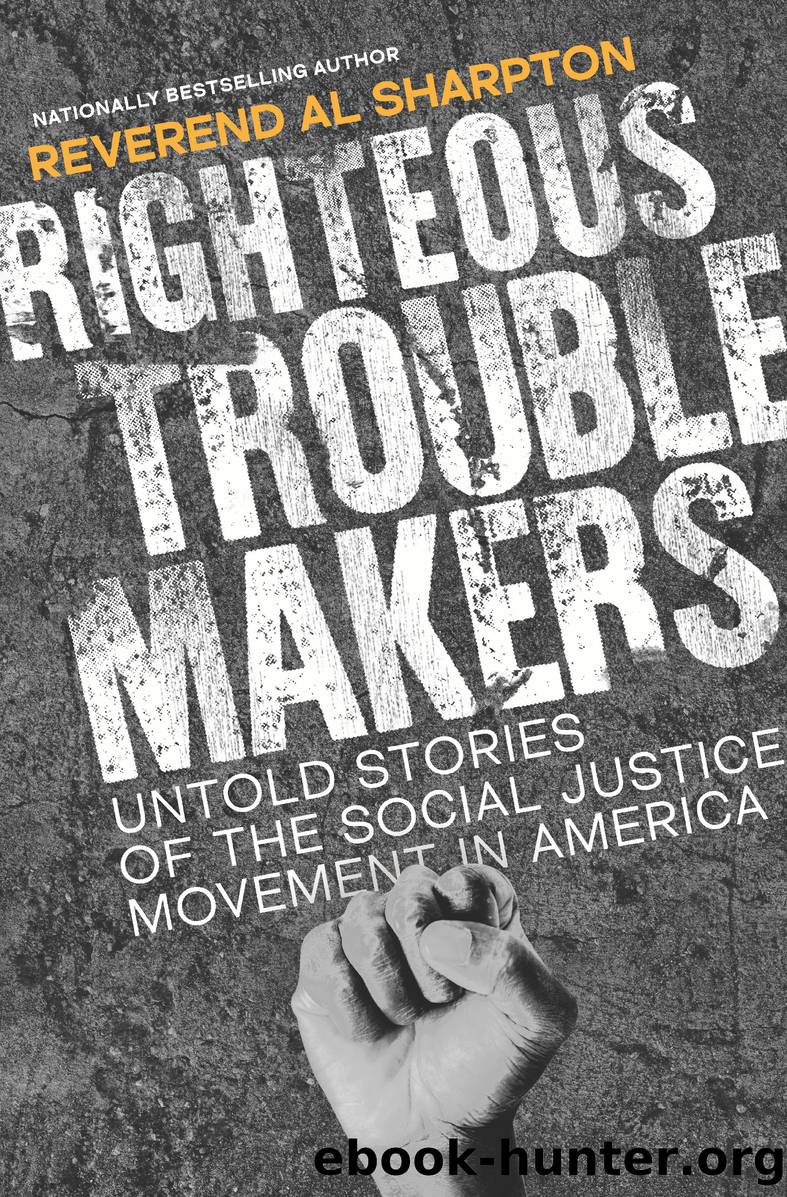Righteous Troublemakers by Al Sharpton

Author:Al Sharpton
Language: eng
Format: epub
Publisher: Hanover Square Press
Published: 2021-11-04T20:11:37+00:00
The Firebrand:
Pauli Murray
Pauli Murray never got the widespread credit she deserved. Had she not written a paper in her final year of law school stating that segregation violated the Thirteenth and Fourteenth Amendments of the Constitution, would Marshall have been able to successfully argue Brown v. Board of Education as well as he did? Would Ruth Bader Ginsburg have been able to convince the US Supreme Court that the Equal Protection Clause applied to women? Murrayâs fingerprints are on both cases.
Ever since the ruling of Plessy v. Ferguson, the landmark decision made by the US Supreme Court in 1896 that codified racial segregation laws, lawyers had been trying to land an argument against it by focusing on the âequalâ part of the âseparate but equalâ doctrine. In a Howard University classroom in 1944, Murray suggested the opposite. Rather than trying to prove why a Black school wasnât the equivalent of a school for white students, for example, why not argue that segregation itself violated the Thirteenth and Fourteenth Amendments of the United States Constitution?
At the time, Murray was the only woman in Professor Spottswood Robinsonâs law class. Her fellow students laughed at her suggestion, calling it impractical. It was more than that. Murrayâs argument was a bullâs-eye dart: simple, direct, and elegant. It was also radical. Undeterred, Murray bet Robinson ten bucks that Plessy would be overturned in twenty-five years. She short-changed herself: it was overturned in a decade when, only a few years later, Robinson presented Murrayâs paper on the subject to Thurgood Marshallâs legal team, who referenced it to successfully argue Brown v. Board of Education. Marshall would later come to describe Murrayâs 1951 book Statesâ Laws on Race and Color as the bible for civil rights litigators.
In the 1970s, Ginsburg would give Murray coauthor credit, along with Dorothy Kenyon, another pioneer in the field, on the legal brief that formed the basis of her argument for Reed v. Reed, the 1971 precedent-setting case that held that the Equal Protection Clause of the Fourteenth Amendment protected womenâs rights. Murray didnât author that paper herself, but Ginsburg acknowledged that, without Murrayâs work, she wouldnât have had a foundation for her own winning legal argument; such was the debt these two legal titans owed Murray. Ginsburg would also go on to draw heavily from Murrayâs Jane Crow and the Law, written with Mary Eastwood, to create material for one of the first law school courses devoted to gender discrimination. Murrayâs outsized influence and accomplishments changed the course of American history, yet hers was a life few among us know.
Anna Pauline Murray was born in Baltimore on November 20, 1910, the fourth of six children. Her mother, Agnes Fitzgerald Murray, a graduate of the Hampton Training School for Nurses, was thirty-five years old and seven months pregnant when she suffered a massive cerebral hemorrhage while standing on the staircase of the family home at 1330 Argyle Street. At the time, Murray was around four years old and, recovering from a recent bout of chicken pox, was isolating from the rest of the family.
Download
This site does not store any files on its server. We only index and link to content provided by other sites. Please contact the content providers to delete copyright contents if any and email us, we'll remove relevant links or contents immediately.
Harry Potter and the Goblet Of Fire by J.K. Rowling(3023)
Unfinished: A Memoir by Priyanka Chopra Jonas(2911)
Never by Ken Follett(2869)
The Man Who Died Twice by Richard Osman(2289)
Machine Learning at Scale with H2O by Gregory Keys | David Whiting(2263)
Fairy Tale by Stephen King(2058)
Will by Will Smith(2032)
Rationality by Steven Pinker(1759)
The Storyteller by Dave Grohl(1655)
The Dawn of Everything: A New History of Humanity by David Graeber & David Wengrow(1564)
The Dark Hours by Michael Connelly(1562)
The Stranger in the Lifeboat by Mitch Albom(1527)
Cloud Cuckoo Land by Anthony Doerr(1428)
The Becoming by Nora Roberts(1323)
Friends, Lovers, and the Big Terrible Thing by Matthew Perry(1320)
Crying in H Mart by Michelle Zauner(1312)
Einstein: His Life and Universe by Walter Isaacson(1311)
New Morning Mercies: A Daily Gospel Devotional by Paul David Tripp(1299)
A Short History of War by Jeremy Black(1295)
